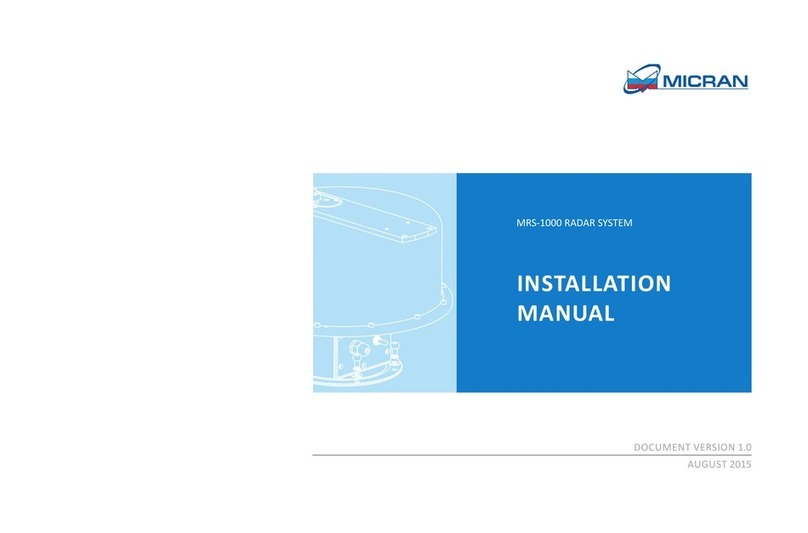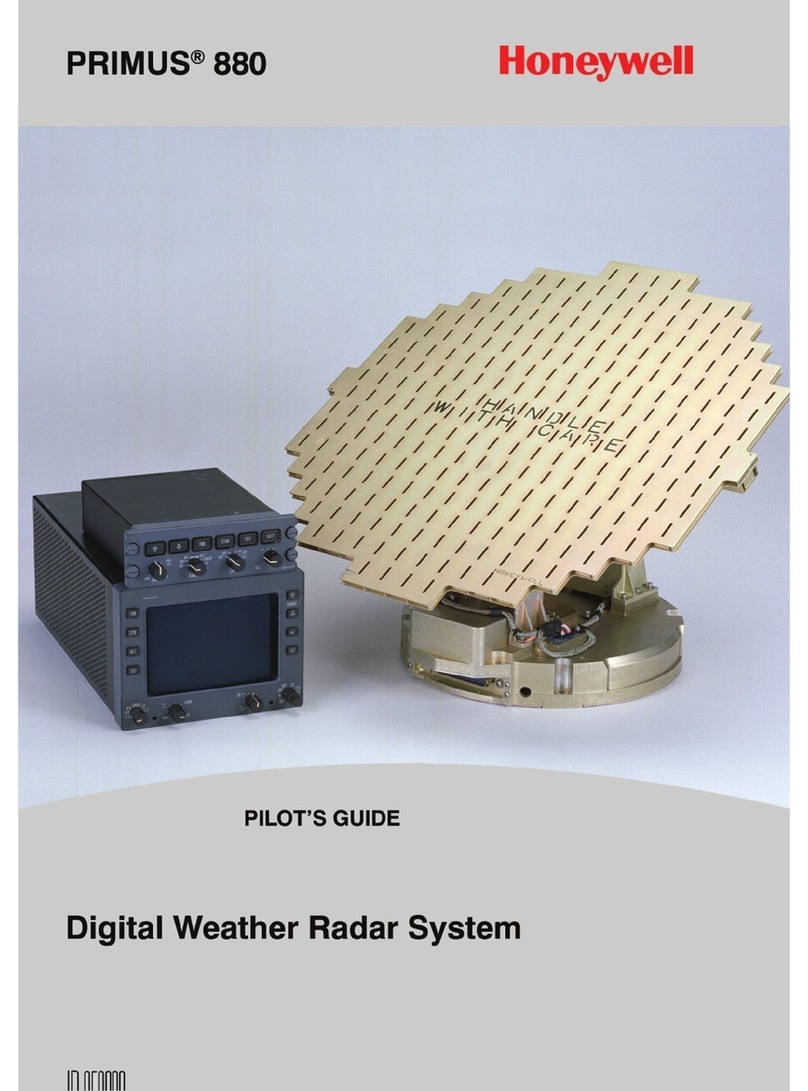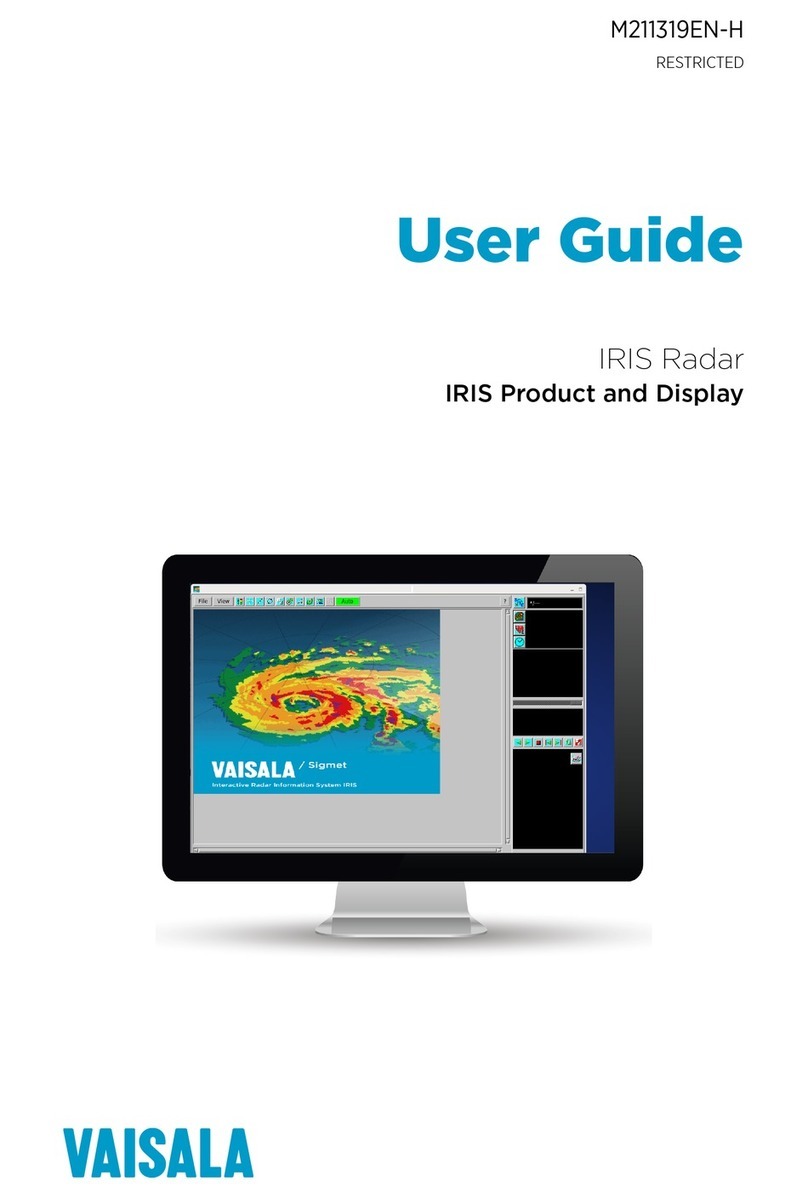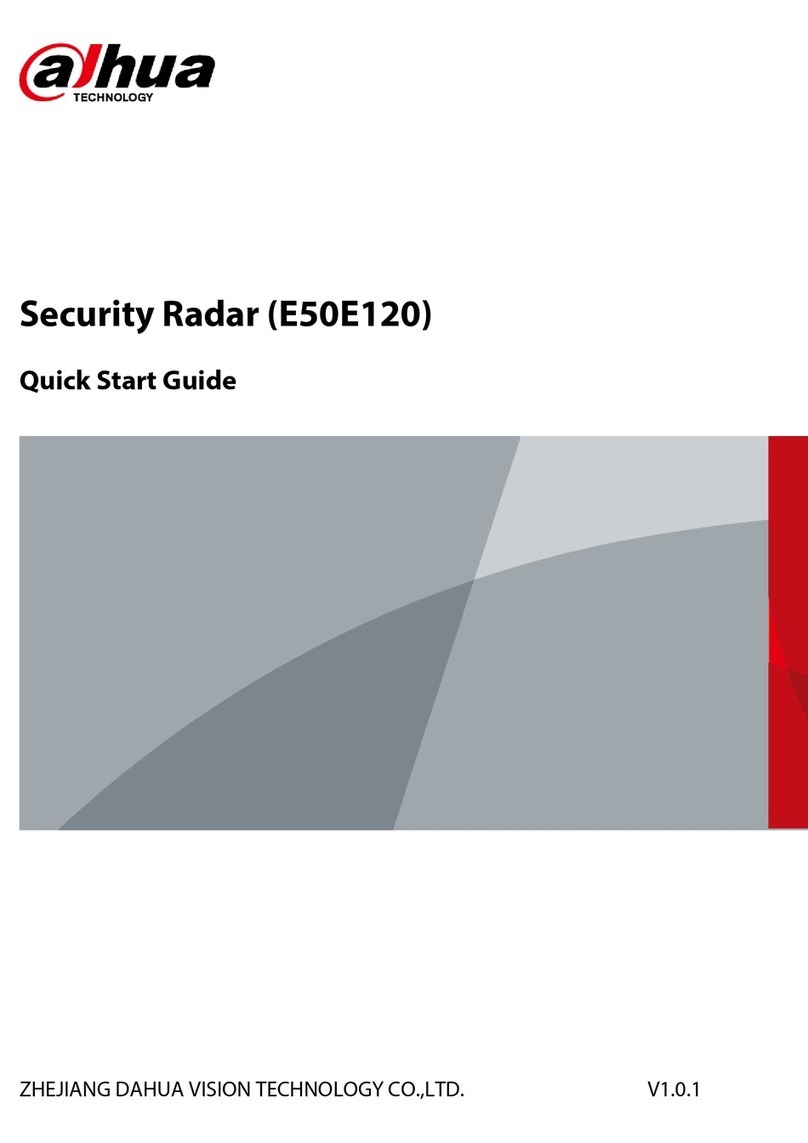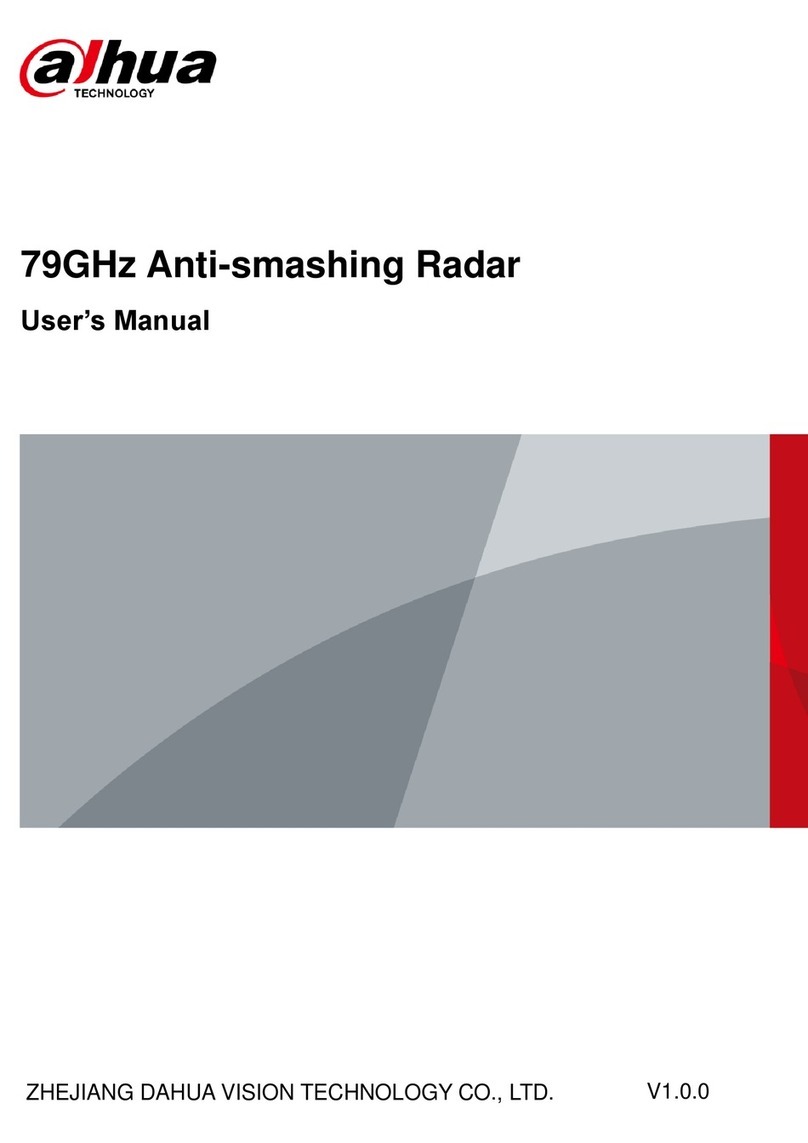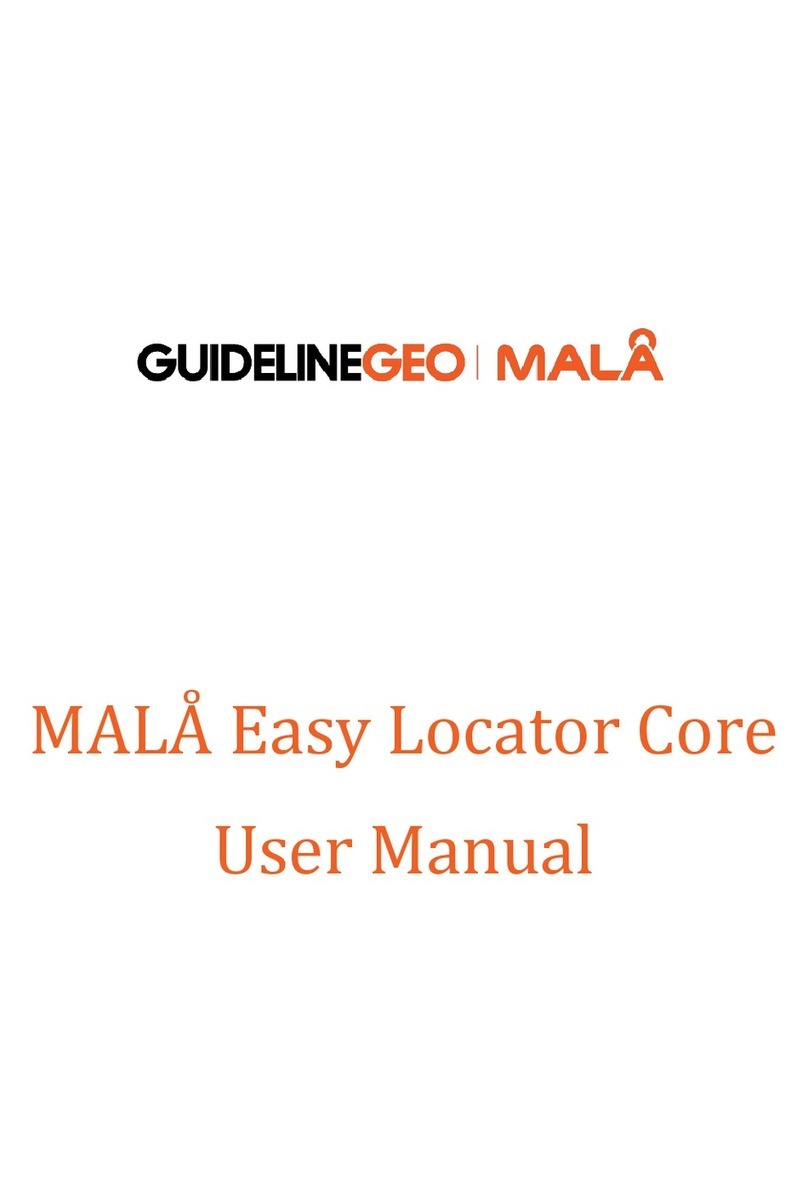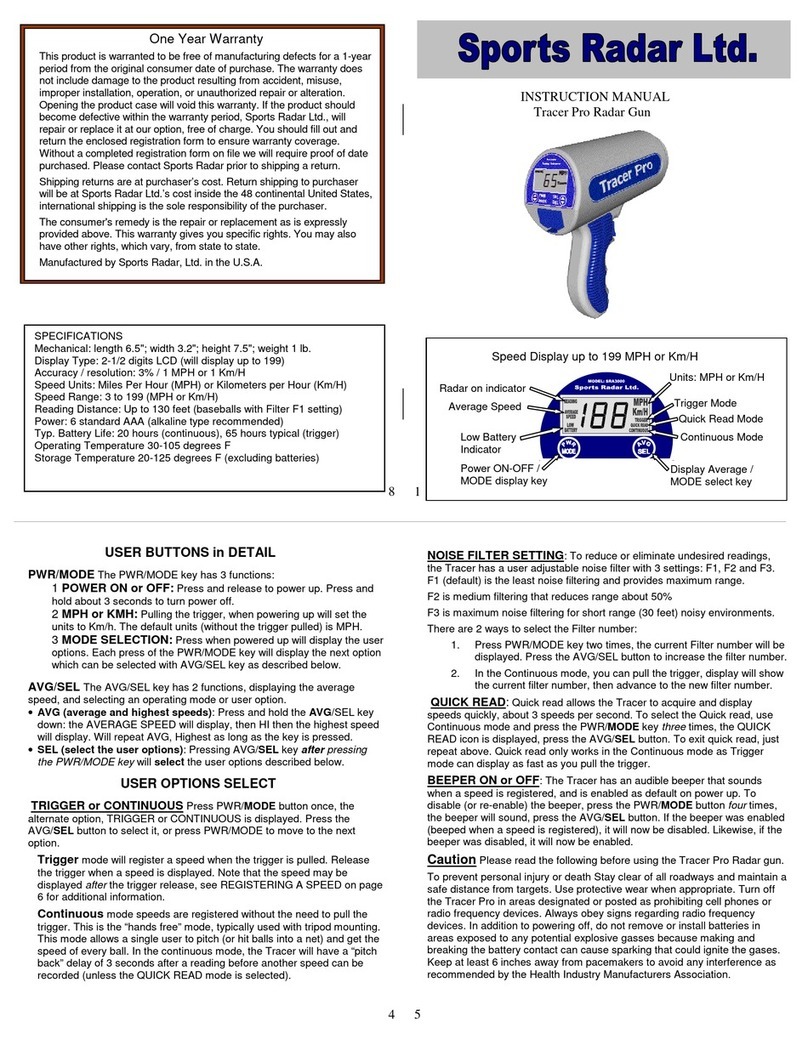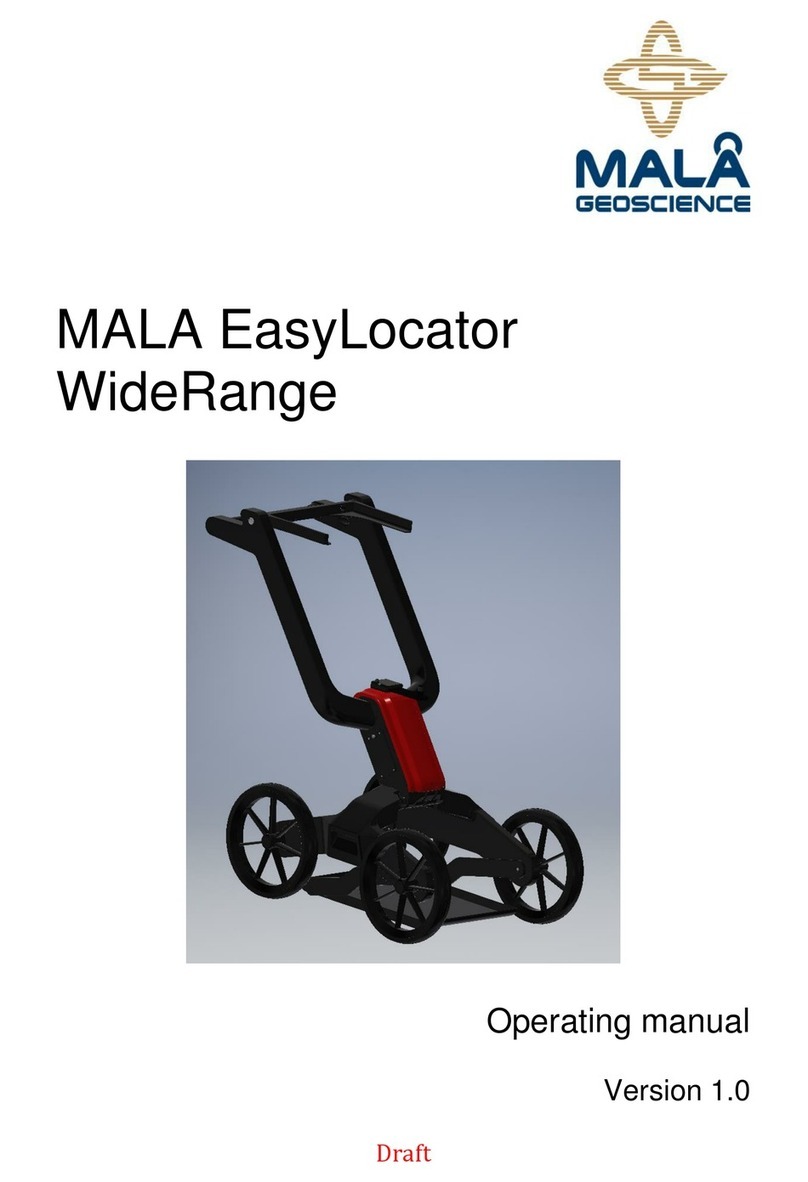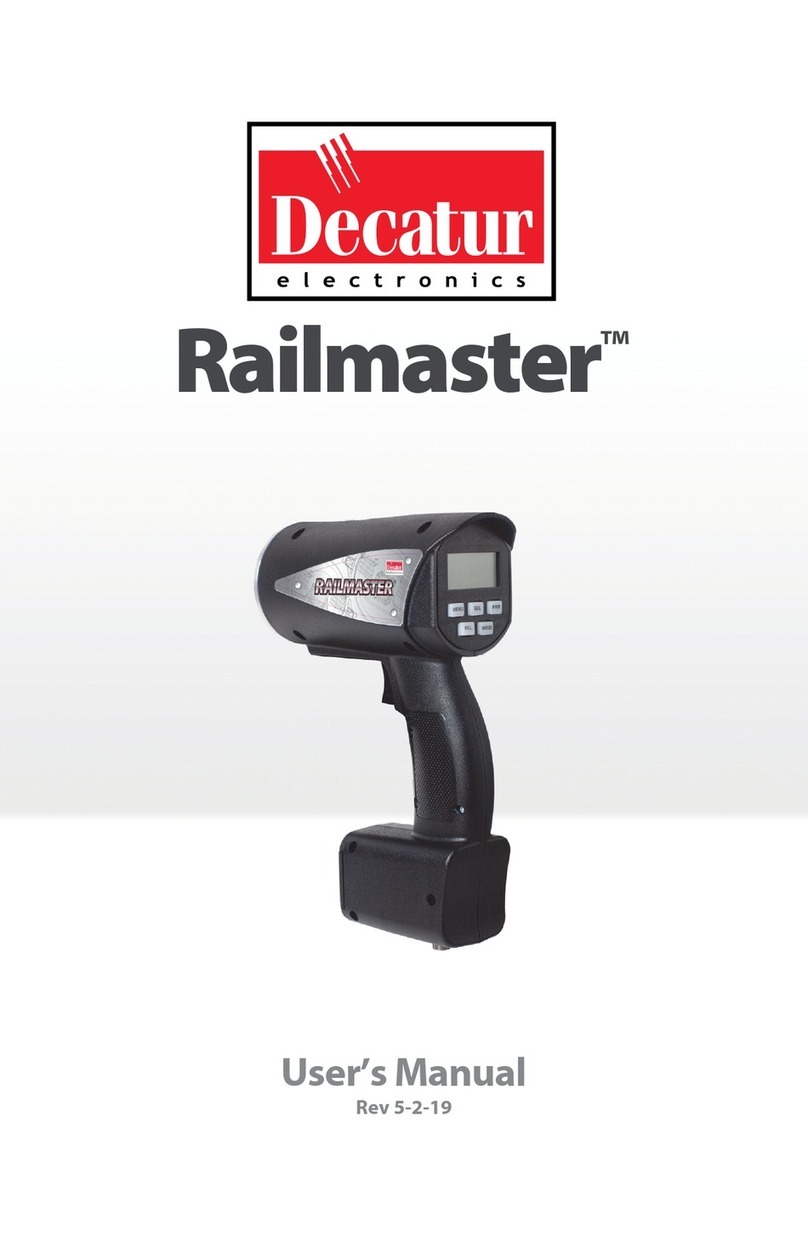Festo LabVolt Series User manual

LabVolt Series
Datasheet
Radar Training System
8097-00
* The product images shown in this document are for illustration purposes; actual products may vary. Please refer to the Specifications section of
each product/item for all details. Festo Didactic reserves the right to change product images and specifications at any time without notice.
Festo Didactic
en
11/2021

Radar Training System, LabVolt Series
© Festo Didactic 2
•
•
•
•
•
•
•
•
•
•
•
Table of Contents
General Description_________________________________________________________________________________ 2
Features & Benefits_________________________________________________________________________________ 2
List of Available Training Systems_____________________________________________________________________ 2
Available Training Systems __________________________________________________________________________ 3
Equipment Description _____________________________________________________________________________ 22
Optional Equipment Description _____________________________________________________________________ 43
General Description
The Radar Training System is still the only real radar trainer that operates safely inside a classroom or lab,
demonstrating that the technical advancement achieved by this system has been unequalled since. The
computer-based control of the radar’s processing and display functions ensures it will continue to be a leading-
edge pedagogical product for many years to come.
The system uses patented technology to provide students with real — not simulated — hands-on experience in
the use of radar to detect and track passive targets at very short range in the presence of noise and clutter. The
very low transmitter power allows for safe operation in a variety of training environments.
Features & Benefits
Real radar training system that operates safely inside a classroom or lab
Innovative design combining real-world radar with the power of modern surveillance technology
Computer-based control of the radar’s processing and display functions
Comprehensive courseware and system level training with lab exercises
Fault-insertion capability for the teaching of troubleshooting
Turnkey, cost-effective training solution including instrumentation
Powerful DSP, FPGA, and Data Acquisition System for Digital Analysis
Realistic, high-gain parabolic antenna for high azimuth (angular) resolution
Several subsystems allow delving into specific topics to expand knowledge and skills
Can expand and complete existing telecommunication programs (satellite, antenna, microwave, etc.)
Total program duration: more than 195 hours (all subsystems)
List of Available Training Systems
Qty Description Model
number
1 Synthetic Aperture Radar (SAR) Training System (add-On to Radar Level 2 and 3) ___________ 592583 (8096-B0)
1 Basic Radar Training System (Level 1) ______________________________________________ 8112495 (8097-10)
1 Radar Processor/Display (Level 2 and 3, add-On to Level 1) ____________________________ 8112498 (8097-20)
1 Radar Tracking Training System (Level 4, add-on to Level 3) ____________________________ 8112501 (8097-30)
1 Radar Active Target Training System (Level 5, add-on to Level 4) ________________________ 8112504 (8097-40)
1 Radar Phased Array Antenna Training System (Level 6, add-on to Level 2 and 3) ___________ 8112507 (8097-60)
1 RCS and ISAR Measurement Training System (add-on to Radar level 2 and 3) ______________ 8122693 (8097-A0)
1 Radar Phase-Coded Pulse Compression Training System (add-on to Radar Level 2 and 3) ____ 8121494 (8097-C0)

Radar Training System, LabVolt Series
3 © Festo Didactic
Available Training Systems
Synthetic Aperture Radar (SAR) Training System (add-On to Radar Level 2 and 3)
592583 (8096-B0)
The Synthetic-Aperture Radar (SAR)
Training System adds on to the RCS
and ISAR Measurement Training
System, Model 8097-A, to form a
synthetic aperture radar that can
produce high-resolution images. This
system introduces students to the
basic principles and operation of
synthetic aperture radar (SAR).
The SAR Training System synthesizes a
large aperture antenna through
motion of a small-aperture (low-
directivity) horn antenna. Motion of
the horn antenna is achieved using the
Target Positioning System, Model 9607-1, included in the Basic Radar Training System, Model 8069-1, and an
antenna-motion control module (SAR controller). Target radar echoes produced during a complete antenna scan
are sampled and stored in the SAR processor then processed using a range Doppler algorithm to obtain high-
resolution SAR images.
The SAR Training System consist of SAR processing and imagery software included in the LVRTS software, a SAR
controller module, the necessary cables and accessories, and a system user guide. Note that RTM 9431-2 from
the Radar Processor/Display add-on is required to use this add-on. Reflective scale models of aircraft that can
be used with the SAR Training System are optionally available. See Optional Equipment for Models 8096-A and
8096-B.
The SAR Training System synthesizes a large aperture antenna through motion
of a small-aperture horn antenna installed on the movable carriage of the
Target Positioning System, Model 9607-1.

Radar Training System, LabVolt Series
© Festo Didactic 4
List of Equipment
Qty Description Model
number
1 SAR Controller __________________________________________________________________ 581970 (9614-00)
1 Accessories for 8096-B ___________________________________________________________ 581988 (9690-F0)
Manual
SAR image of a 777-Boeing aircraft reflective scale model obtained with the
SAR Training System.
SAR image of a 777-Boeing aircraft reflective scale model obtained with the
SAR Training System.
Description Manual
number
Synthetic-Aperture Radar (SAR) (User Guide) ____________________________________________593946 (54269-E0)

Radar Training System, LabVolt Series
5 © Festo Didactic
•
•
•
•
•
•
•
Table of Contents of the Manual(s)
Synthetic-Aperture Radar (SAR) (User Guide) (593946 (54269-E0))
1 Introduction to SAR
2 Hardware Setup
3 SAR Processor Overview
4 System Description
5 System Operation
6 Processing Examples
7 Specifications
Optional Equipment
Qty Description Model
number
1 B2 Bomber RCS Scale Model _____________________________________________________ 587493 (39208-02)
1 F-117A Stealth Fighter RCS Scale Model ____________________________________________ 587494 (39209-02)
System Specifications
Parameter Value
Operating Frequency 9.4 GHz
Actual Aperture Beamwidth 24°
Range Resolution 15 cm
Azimuth Resolution 6.5 cm at 3 m (equivalent to 1.25° SAR beamwidth)
Descent Angle 25°
Range Swath 90 cm
Processed Area 4 m² (2 m x 2 m)
Basic Radar Training System (Level 1)
8112495 (8097-10)
The Basic Radar Training System is a complete set of hardware,
courseware, and all necessary accessories such as targets and
interconnecting cables that allows the principles of pulse, CW
Doppler, and FM-CW radar systems to be studied.
The Basic Radar Training System consists of a transmitter, a
receiver, three instrumentation modules, an antenna with
pedestal, a target positioning system, and a set of accessories. A
comprehensive student manual and an instructor guide, which
may be ordered separately, are also provided.
Radar echo of a moving target observed on an A-scope display obtained using a
conventional oscilloscope.
An oscilloscope is required for target
echo visualization on an A-scope
display as well as time-domain
observation of signals at outputs and
test points (the Model 797 Dual Trace
Oscilloscope is recommended).

1 Only one oscilloscope is required to perform the experiments. Please select the right one based on your AC network.
2 A frequency counter is required to perform the experiments.
Radar Training System, LabVolt Series
© Festo Didactic 6
•
•
•
•
•
•
•
•
•
•
•
List of Equipment
Qty Description Model
number
1 Horn Antenna ___________________________________________________________________ 581847 (9535-00)
1Power Supply/ Antenna Motor Driver ______________________________________________ 8084743 (9601-20)
1 Radar Synchronizer / Antenna Controller ____________________________________________ 595986 (9602-20)
1 Rotating-Antenna Pedestal _______________________________________________________ 8112383 (9603-10)
1 Radar Antenna __________________________________________________________________ 581936 (9604-00)
1 Dual-Channel Sampler ___________________________________________________________ 595989 (9605-10)
1 Target Positioning System _______________________________________________________ 8121782 (9607-30)
1 Radar Transmitter _______________________________________________________________ 595172 (9620-20)
1 Radar Receiver __________________________________________________________________ 595990 (9621-20)
1 Accessories for 8097-1 __________________________________________________________ 8112515 (9688-00)
List of Manuals
Table of Contents of the Manual(s)
Principles of Radar Systems (Workbook) (580402 (38542-00))
1-1 Basic Principles of Pulsed Radar
1-2 The Range-Delay Relationship
1-3 Radar Antennas
1-4 The Radar Equation
2-1 Pulsed Radar Transmitter and Receiver
2-2 Antenna Driving System
3-1 CW Radar and the Doppler Effect
3-2 Frequency-Modulated CW Radar
4-1 Troubleshooting a CW Radar
4-2 Troubleshooting an FM-CW Radar
4-3 Troubleshooting a Pulsed Radar: The RF Section
Additional Equipment Required to Perform the Exercises
Qty Description Model
number
1Dual-Trace Digital Storage Oscilloscope _____________________________________________ 585695 (798-10) 1
1Frequency Counter (0.1Hz - 2.4 GHz) ______________________________________________ 8112877 (9416-00) 2
System Specifications
Parameter Value
Power Requirement
Current 10 A (for 120V)
Frequency Range 8-10 GHz
Output Power Density at Horn
CW Mode 0.02 mW/cm²
Description Manual
number
Principles of Radar Systems (Workbook) _______________________________________________ 580402 (38542-00)
Radar Training System (Workbook (Instructor)) _________________________________________ 580405 (38542-10)

Radar Training System, LabVolt Series
7 © Festo Didactic
Parameter Value
Maximum Range (Equiv. RCS of Target: 1 m²) Typically more than 8 m (26 ft)
Range 1.8 m (5.9 ft), 3.6 m (11.8 ft), 7.2 m (23.6 ft), switch selectable
Range Resolution Typically 15 cm (6 in)
Physical Characteristics
Dimensions About 8 m² (86 ft²)
Net Weight TBE
Radar Processor/Display (Level 2 and 3, add-On to Level 1)
8112498 (8097-20)
The Radar Processor/Display is used in conjunction with the
Basic Radar Training System, Model 8097-1, to form a complete
and modern pulse radar system. The Radar Processor/Display
adds the following elements to the Basic Radar Training System:
radar echo signal processing functions, PPI display functions,
on-screen block diagrams of the complete radar and radar
processor/display subsystem, and computer-based (i.e., on-
screen) instruments (oscilloscope and data monitoring system).
Two major types of radar echo signal processing function are
available: Moving Target Indication (MTI) and Moving Target
Detection (MTD). The Radar Processor/Display also provides computer-controlled generation of clutter and
interference to allow study of the MTI processing function. The following types of clutter and interference can be
generated: sea clutter, rain clutter, second-trace echo, noise, and pulse interference.
The Radar Processor/Display consists of a reconfigurable training module (RTM), a power supply for the RTM,
three interface modules, a set of accessories including the Radar Training System Software, two comprehensive
student manuals, and a user guide. A Windows®based host computer (to be purchased separately) is required
with the RTM. The Model 9695 Radar Host Computer is recommended.
Example of a PPI display obtained with the Radar Processor/Display.
The RTM is the cornerstone of the
Radar Processor/Display. This module,
which uses state-of-the-art digital
signal processor (DSP) technology, can
be programmed to act as either an
analog pulse radar (i.e., a pulse radar
with MTI processing) or a digital pulse
radar (i.e., a pulse radar using MTD,
correlation and interpolation, and
surveillance processing). Interface
modules that students install in the
RTM allow connection of the various
signals coming from the Basic Radar
Training System, as shown in Figure 1.
The RTM can also be programmed to
act as a tracking radar when used with
the Radar Tracking Training System,
Model 8096-3.

Radar Training System, LabVolt Series
© Festo Didactic 8
•
•
•
•
•
•
•
•
•
Figure 1. Simplified connection diagram of the Basic Radar Training System and
Radar Processor/Display.
The RTM processes the signals from
the Basic Radar Training System to
detect targets, and sends data to the
radar host computer via a high-speed
data link (Ethernet link with TCP/IP
protocol). The RTM can also generate
clutter and interference which are
added to the I- and Q-channel echo
signals from the radar receiver, before
signal processing takes place. The
radar host computer, which runs the
LVRTS software, uses the data
produced by the RTM to display the
detected targets on a PPI display. The
LVRTS software is a Windows®-based
application used to download
programs into the DSP memory of the
RTM, to select the type of radar which is implemented (see Figure 2). It also has an intuitive user interface to:
Select the radar processing functions and adjust other parameters of the radar, such as the video gain, detection threshold, etc. (see
Figure 3)
Control the radar display functions such as the PPI display mode selection, Variable Range Marker (VRM), Electronic Bearing Line (EBL),
etc. (see Figure 4)
Display diagrams that show how to connect the equipment (see Figure 5).
Display the functional block diagrams of the complete radar and radar processor/display subsystem (see Figure 6).
Connect virtual probes to test points in the aforementioned block diagrams to observe real signals using the built-in oscilloscope (see
Figure 7).
Use the Data Monitor to observe and analyze the signal processing sequence involved in Moving Target Detection (see Figure 8).
Insert faults in the system (password-protected feature) for troubleshooting purposes (see Figure 9).
Set the parameters that control the generation of clutter and interference (see Figure 10).
Obtain on-line help screens (see Figure 11).
Figure 2. On-screen selection of the type of radar which is implemented.

Radar Training System, LabVolt Series
9 © Festo Didactic
Figure 3. Computer-based control of the radar processing functions and
operating parameters.
Figure 4. Computer-based control of the radar display functions.

Radar Training System, LabVolt Series
© Festo Didactic 10
Figure 5. Window showing the interconnections to the RTM.
Figure 6. On-screen block diagram of the Moving Target Indicator (MTI)
processor.
Figure 7. Real signals can be observed on the built-in oscilloscope by
connecting virtual probes to test points in the on-screen block diagrams.

Radar Training System, LabVolt Series
11 © Festo Didactic
Figure 8. The Data Monitor is a powerful tool designed to study the various
stages (FFT Doppler filtering, thresholding, alarm generation) of Moving Target
Detection (MTD).
Figure 9. Faults window in the LVRTS software.
Figure 10. Computer-based control of clutter and interference generation.

Radar Training System, LabVolt Series
© Festo Didactic 12
•
•
•
•
•
•
•
•
•
•
•
•
List of Equipment
Qty Description Model
number
1 RTM Power Supply _____________________________________________________________ 8112514 (9408-2X)
1 Reconfigurable Training Module (RTM) _____________________________________________ 8094635 (9431-30)
1 Analog/Digital Signal Combiner ___________________________________________________ 8112776 (9630-10)
1 Data Acquisition Interface _______________________________________________________ 8112777 (9631-10)
1 Radar Analog/Digital Output Interface _____________________________________________ 8093433 (9635-00)
1 Accessories for 8097-2 __________________________________________________________ 8112516 (9688-A0)
List of Manuals
Table of Contents of the Manual(s)
Analog MTI Processing (Workbook) (580412 (38543-00))
1-1 Familiarization with the Analog Pulse Radar
1-2 The PPI Display
2-1 Phase-Processing MTI
2-2 Vector-Processing MTI
2-3 Staggered PRF
2-4 MTI Limitations
3-1 Threshold Detection
3-2 Pulse Integration
3-3 Sensitivity Time Control
3-4 Instantaneous Automatic Gain Control
3-5 The Log-FTC Receiver
3-6 Constant False-Alarm Rate
Figure 11. On-line help screens are available through a few clicks of the mouse
button.
Description Manual
number
Analog MTI Processing (Workbook) ___________________________________________________ 580412 (38543-00)
Radar Processor/Display (User Guide) _________________________________________________580414 (38543-E0)
Digital MTD Processing (Workbook) __________________________________________________ 580418 (38544-00)

3 A function generator is required to perform the experiments.
4 Only one computer is required to perform the experiments. Please select the right one based on your AC network.
Radar Training System, LabVolt Series
13 © Festo Didactic
•
•
•
•
•
•
•
•
•
•
•
4-1 Troubleshooting the MTI Processor
4-2 Troubleshooting the Display Processor
4-3 Troubleshooting an MTI Radar System
Digital MTD Processing (Workbook) (580418 (38544-00))
1-1 Familiarization with the Digital Pulse Radar
1-2 The PPI Display
2-1 Cell Mapping
2-2 Fast Fourier Transform (FFT) Processing
2-3 Constant False-Alarm Rate (CFAR)
3-1 Correlation and Interpolation (CI) Processing
3-2 Surveillance (Track-While-Scan) Processing
4-1 Troubleshooting the Digital MTD/PPI Processor
Additional Equipment Required to Perform the Exercises
Qty Description Model
number
1Function Generator 5 MHz ______________________________________________________ 8125246 (9409-00) 3
1Radar Host Computer ___________________________________________________________ 587465 (9695-00) 4
System Specifications
Parameter Value
MTI Processor (Analog)
Functions
Functions Sensitivity Time Control (STC), moving target cancellation, logarithmic amplification, Fast Time
Constant (FTC), Constant False-Alarm Rate (CFAR), Instantaneous Automatic Gain Control (IAGC), antilog
conversion, 4- and 8-pulse video integration (non-coherent)
I- and Q-Channel Input Voltage Range -1.5 to +1.5 V
Video Output Voltage Range -10 to +10 V
On-Screen Test Points 15
Faults 12
Display Processor (Analog)
PPI Outputs X and Y, Voltage Range -8 to +8 V
PPI Output Z TTL
Azimuth Input TTL
On-Screen Test Points 8
Faults 4
MTD Processor (Digital)
Functions Moving Target Detection (MTD), Correlation and Interpolation, Surveillance
Coherent Processing Intervals (CPI) 2, 4/3 ratio, synchronized in azimuth
Target Tracking Capability up to 8 targets simultaneously
I- and Q-Channel Input Voltage Range -1.5 to +1.5 V
PPI Outputs X and Y, Voltage Range -8 to +8 V
PPI Output Z TTL
Azimuth Input TTL
On-Screen Test Points 15
Faults 13
PPI Display (Digital)
Number of Sectors 60
Sector Width 6°
Number of Range Segments 16, 32, and 64 on 1.8-m (5.9-ft), 3.6-m (11.8-ft), and 7.2-m (23.6-ft) ranges, respectively
Range Segment Length 11.25 cm (4.4 in)
Number of Cells 960, 1920, and 3840 on 1.8-m (5.9-ft), 3.6-m (11.8-ft), and 7.2-m (23.6-ft) range, respectively

Radar Training System, LabVolt Series
© Festo Didactic 14
Radar Tracking Training System (Level 4, add-on to Level 3)
8112501 (8097-30)
The Radar Tracking Training System adds on to the pulse radar
implemented with the Basic Radar Training System and the
Radar Processor/Display (systems 8097-1 and 8097-2,
respectively), to form a continuous tracking radar. This radar can
track a passive target that moves in the classroom laboratory.
The Radar Tracking Training System includes an interface module
to be installed in the RTM of the Radar Processor/Display, a
special dual-feed parabolic antenna, a joystick-type hand
controller, a set of accessories, and a student manual.
The tracking radar can operate in three different modes (Scan,
Manual, and Lock), which are selected through the hand-controller buttons. In scan mode, the antenna rotates
at constant speed, allowing observation of targets on the PPI display. In manual mode, the operator can isolate
a fixed or moving target of his or her choice, using the hand controller to control the antenna beam angle and to
position an electronic marker (range gate) over the target echo signal. A computer-based O-scope display is
used to monitor the position of the range gate relative to the echo signal of the target to be acquired. When the
range gate straddles the target echo signal, the lock mode can be activated and the target is automatically
tracked in range and azimuth by the system.
Range tracking is achieved by means of the split range-gate technique, whereas angle tracking is accomplished
using lobe switching (sequential lobing). In addition to the fully automatic tracking mode, several useful ECCM
features are available, such as a switchable lobing rate, a range tracking rate limiter in the range loop, manual
control of either the range loop or the azimuth loop while the system is locked onto a target, and leading-edge
range tracking. The computer-based interface of the tracking radar allows control of these functions and offers
the same other possibilities as for the pulse radar system (visualization of the system's block diagrams,
connection of virtual probes in the onscreen block diagrams, observation of signals on the built-in oscilloscope,
fault insertion, etc.)
List of Equipment
Qty Description Model
number
1 Dual Feed Parabolic Antenna ______________________________________________________ 581937 (9604-A0)
1 Radar Target Tracking Interface ___________________________________________________ 8112778 (9633-10)
1 Accessories for 8096-3 ___________________________________________________________ 581984 (9690-B0)
Figure 12. Antenna replacement is quick and easy thanks to miniature plug-in
connectors in the antenna frame and antenna pedestal's shaft.
Installation of the Radar Tracking
Training System is very simple: insert
the interface module in the RTM,
modify a few connections, connect the
hand controller to a USB port of the
host computer, and replace the
conventional parabolic antenna with
the dual-feed parabolic antenna.
These two antennas come with a
miniature plug-in connector to
facilitate replacement, as shown in
Figure 12.

Radar Training System, LabVolt Series
15 © Festo Didactic
•
•
•
•
•
•
•
•
Qty Description Model
number
1 Radar Tracker Hand Controller (USB) ________________________________________________ 581992 (9694-10)
Manual
Table of Contents of the Manual(s)
Tracking Radar (Workbook) (580422 (38545-00))
1 Familiarization with the Tracking Radar
2 Manual Tracking of a Target
3 Automatic Range Tracking
4 Angle Tracking Techniques
5 Automatic Angle Tracking
6 Range and Angle Tracking Performance (Radar-Dependent Errors)
7 Range and Angle Tracking Performance (Target-Caused Errors)
8 Troubleshooting a Radar Target Tracker
System Specifications
Parameter Value
Lobe Switch Control Input, Voltage Range -5 to +5 V
Antenna Rotation Command Input, Voltage Range -5 to +5 V
Lobe Switch Control Output, Voltage Range -5 to +5 V
Antenna Rotation Command Output, Voltage Range -5 to +5 V
PPI Display
X- and Y-Output Voltage Range -8 to +8 V
Z Output Voltage Range TTL
O-Scope Display
Video Output Voltage Range -10 to +10 V
Time Base Output Voltage Range 0 to +10 V
Maximum Range Tracking Rate >35 cm/s (>14 in/s)
Maximum Angle (Azimuth) Tracking Rate >6°/s
On-Screen Test Points 24
Faults 12
Radar Active Target Training System (Level 5, add-on to Level 4)
8112504 (8097-40)
Radar Active Target (RAT) Training System is used in conjunction
with the three previous subsystems (systems 8097-1, 8097-2,
and 8097-3) to train students in the principles and scenarios of
EW. This is a truly unique system that places real-time, safe, and
unclassified EW demonstrations into the hands of students. The
RAT Training System consists of an active jamming pod trainer,
an elaborate set of accessories, and a comprehensive student
manual.
* WARNING: This equipment is subject to export control. Please
contact your sales representative to know if this product can be imported in your region.
Description Manual
number
Tracking Radar (Workbook) _________________________________________________________ 580422 (38545-00)

Radar Training System, LabVolt Series
© Festo Didactic 16
•
•
List of Equipment
Qty Description Model
number
1 Horn Antenna ___________________________________________________________________ 581847 (9535-00)
1RadarJammingPod Trainer Support ________________________________________________ 581916 (9595-10)
1 Radar Jamming Pod Trainer ________________________________________________________ 581949 (9608-10)
1 Power Supply (Radar Electronic Warfare) ___________________________________________ 8095962 (9609-10)
1 Accessories for 8096-4 ___________________________________________________________ 581985 (9690-C0)
List of Manuals
Table of Contents of the Manual(s)
Radar in an Active Target Environment (Workbook) (580425 (38546-00))
1-1 Familiarization with the Radar Jamming Pod Trainer
1-2 Spot Noise Jamming and Burn-Through Range
Figure 13. Effect of barrage noise jamming produced by the jamming pod
trainer of the RAT Training System as observed on the Radar PPI display.
The jamming pod trainer is a Self-
Screening Jammer (SSJ) target that can
perform direct or modulated noise
jamming (see Figure 13) as well as
repeater jamming. It includes a remote
controller to select the type of
jamming and set the jamming
parameters. The jamming pod trainer
and the included accessories are
designed for use with the Radar to
implement real EW situations. This
provides an effective means of
introducing students to a real-time
jamming situation that necessitates a
response, that is, the use of an
appropriate ECCM to prevent losing
track of the target.
Stealth accessories in the RAT Training System allow reduction of the jamming
pod trainer’s radar cross section.
Description Manual
number
Electronic Warfare (User Guide) ______________________________________________________ 580343 (32254-80)
Radar in an Active Target Environment (Workbook) ______________________________________ 580425 (38546-00)

Radar Training System, LabVolt Series
17 © Festo Didactic
•
•
•
•
•
•
•
•
•
•
•
1-3 Frequency Agility and Barrage Noise Jamming
1-4 Video Integration and Track-On-Jamming
1-5 Antennas in EW: Sidelobe Jamming and Space Discrimination
2-1 Deception Jamming Using the Radar Jamming Pod Trainer
2-2 Range Gate Pull-Off
2-3 Stealth Technology: The Quest for Reduced RCS
3-1 Deceptive Jamming Using Amplitude-Modulated Signals
3-2 Cross-Polarization Jamming
3-3 Multiple-Source Jamming Techniques
4-1 Chaff Clouds
4-2 Chaff Clouds used as Decoys
Radar Phased Array Antenna Training System (Level 6, add-on to Level 2 and 3)
8112507 (8097-60)
The Radar Phased Array Antenna Training System is specifically
designed to be used with the complete, pulse radar system that
can be implemented with the Basic Radar Training System and
the Radar Processor/Display (systems 8097-1 and 8097-2,
respectively). The training system includes a phased array
antenna, a beam-steering control module, the necessary cables,
and a comprehensive student manual that deals with the
principles of electronically steered antennas.
Beam steering in the Radar Phased Array Antenna Training
System is achieved using a microwave switch coupled to a
Rotman lens and microstrip tapered slot array antennas. Beam
steering control can be manual, continuous or radar PRF dependent. Scan speeds of up to 1080 scans/min can
be achieved, thereby allowing the PPI display (sector scan) of the radar system to be refreshed at much higher
rates than with a conventional mechanically rotated parabolic antenna. Targets can thus be followed in near real
time.
List of Equipment
Qty Description Model
number
1 Phased Array Antenna ____________________________________________________________ 581966 (9612-00)
1 Phased Array Antenna Controller ___________________________________________________ 581968 (9613-00)
1 Accessories for 8096-6 ___________________________________________________________ 581987 (9690-E0)
The Radar Phased Array Antenna Trainer is fully compatible with the Radar
Training System. It allows sector-scan operation with no antenna motion.

Radar Training System, LabVolt Series
© Festo Didactic 18
•
•
•
•
•
•
•
•
•
•
Manual
Table of Contents of the Manual(s)
The Phased Array Antenna (Workbook) (580428 (38547-00))
1-1 Familiarization with the Phased Array Antenna
1-2 The True Time-Delay Rotman Lens
1-3 The Switching Matrix
2-1 Beamwidth Measurement
2-2 Radiation Pattern Measurement
2-3 Angular Separation Measurement
2-4 Phased Array Antenna Gain Measurement
2-5 Maximum Scan Angle Measurement
2-6 Target Bearing Estimation
2-7 Target Speed Estimation
RCS and ISAR Measurement Training System (add-on to Radar level 2 and 3)
8122693 (8097-A0)
The RCS and ISAR Measurement Training System
adds on to the Radar Processor/Display, Model
8097-2, to form a computer-based, pulse-mode
system that can measure the radar cross section
(RCS) of targets and produce inverse synthetic-
aperture radar (ISAR) images of targets.
The system can generate RCS patterns of targets
of up to 75 cm (30 in) in length when the longest
pulse width is used. The system can also generate
high-resolution ISAR images of much larger
targets when the shortest pulse width is used.
Because the system is based on pulse operation,
it does not need to be operated in an anechoic
chamber or in an outdoor range. Background
clutter is rejected using time-gating and subtraction techniques during the measurement process.
The RCS and ISAR Measurement Training System includes a low-RCS target support to achieve precise RCS
measurements; an RCS/ISAR data acquisition interface; an RCS measurement/ISAR imagery software included
in the LVRTS software; an RCS/ISAR measurement interface module; a set of accessories including a reflective
scale model of a 777 Boeing aircraft; and a system user guide. Note that RTM 9431-2 (or newer) from the Radar
Processor/Display add-on is required to use this add-on. Other reflective scale models are optionally available.
Description Manual
number
The Phased Array Antenna (Workbook) ________________________________________________ 580428 (38547-00)

Radar Training System, LabVolt Series
19 © Festo Didactic
RCS pattern of a scale model of a 777 Boeing aircraft obtained using the RCS
and ISAR Measurement Training System.
In the ISAR imagery mode, the RCS and ISAR Measurement Training System can
produce images that show the shape of a target (view of a 777-Boeing aircraft
shown).

Radar Training System, LabVolt Series
© Festo Didactic 20
•
•
•
List of Equipment
Qty Description Model
number
1 RCS/ISAR Measurement Interface __________________________________________________ 581960 (9610-00)
1 RCS/ISAR Data Acquisition Interface _______________________________________________ 8122692 (9634-10)
1 Accessories for 8097-A __________________________________________________________ 8129037 (9688-D0)
Manual
Table of Contents of the Manual(s)
RCS and ISAR Measurement Training System (User Guide) (593911 (52792-E0))
1 Overview of the RCS and ISAR Measurement Training
2 Module Setup and Connections
3 RCS Measurement
The RCS pattern of an actual aircraft can be obtained by placing a reflective
scale model on top of the low-RCS rotating support of the RCS and ISAR
Measurement Training System.
Accessories for 8096-A.
Description Manual
number
RCS and ISAR Measurement Training System (User Guide) _________________________________593911 (52792-E0)
Table of contents
Popular Radar manuals by other brands
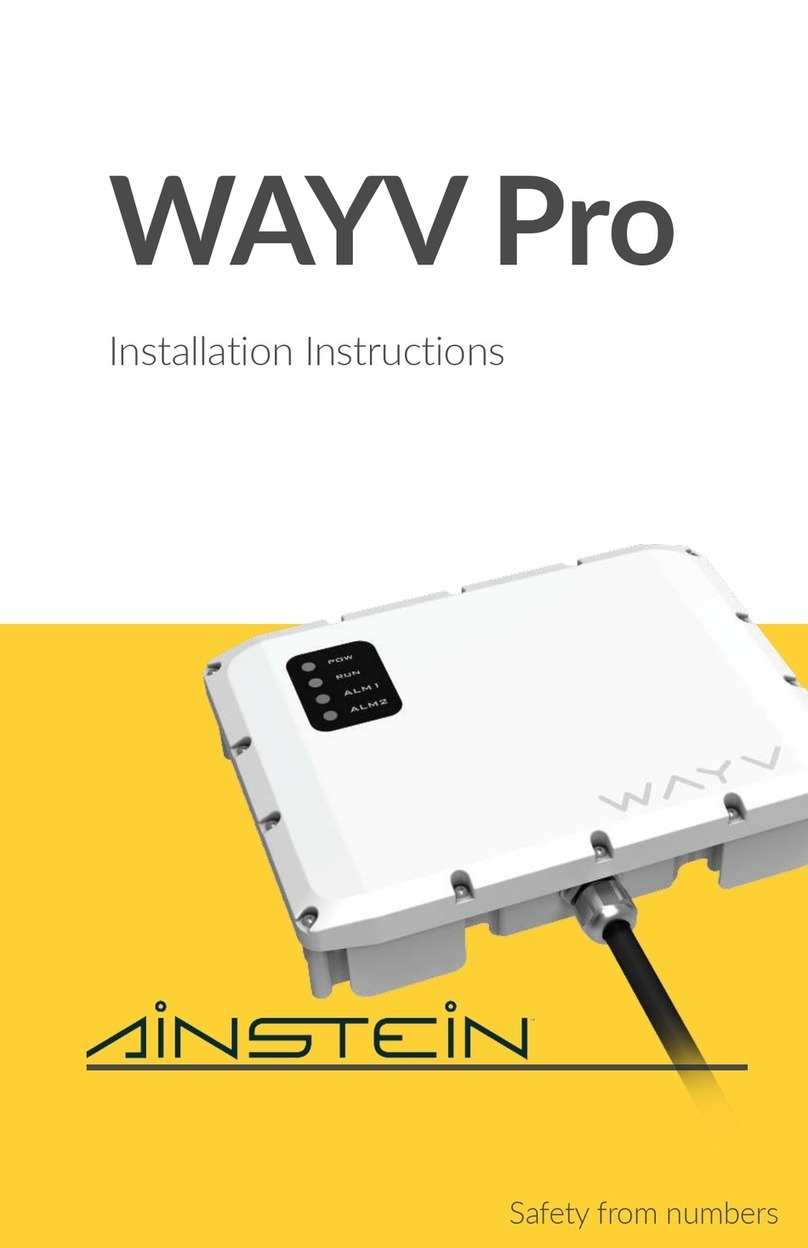
Ainstein
Ainstein WAYV Pro installation instructions
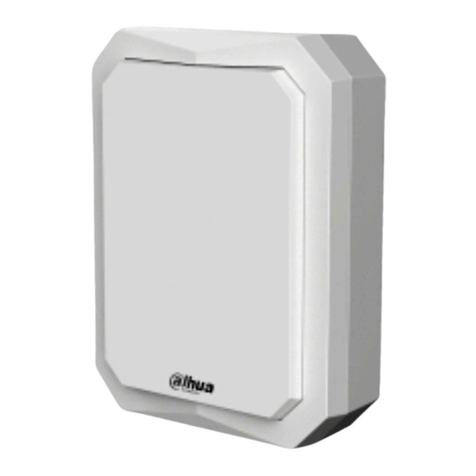
Dahua Technology
Dahua Technology DH-PFR4K-E50 user manual
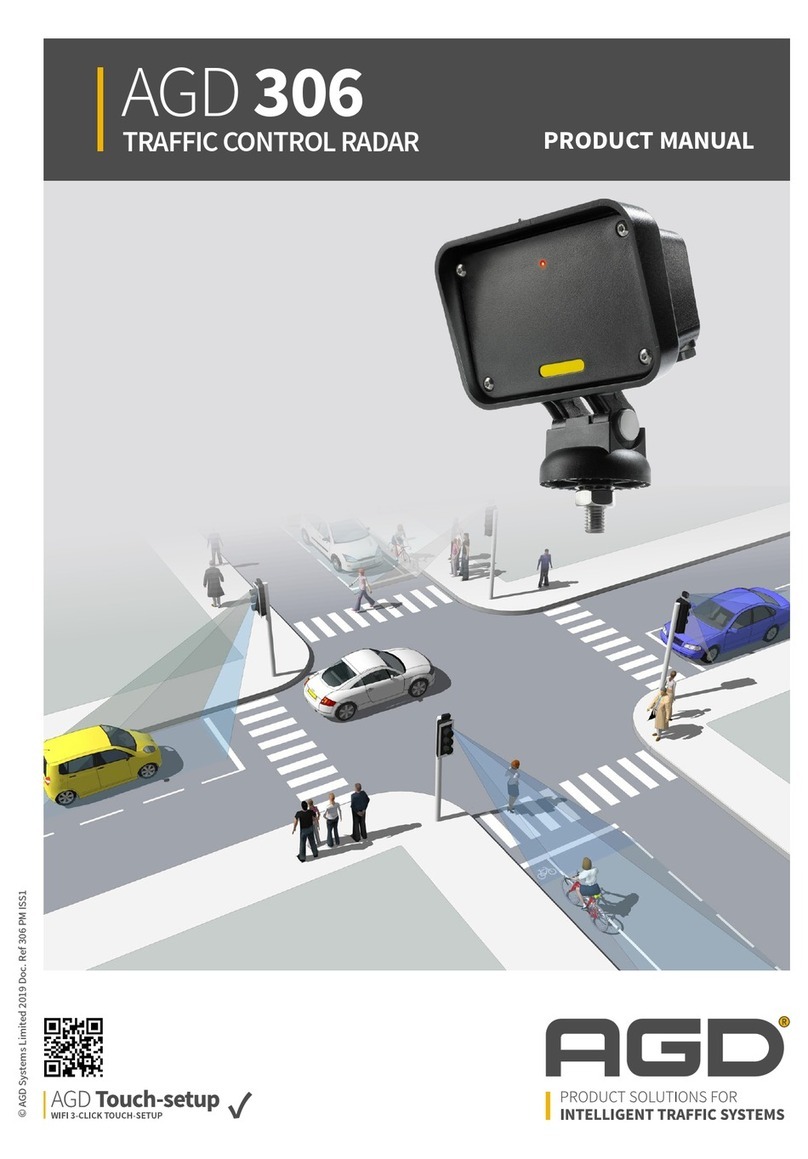
AGD
AGD 306 product manual

Garmin
Garmin Varia eRTL615 owner's manual
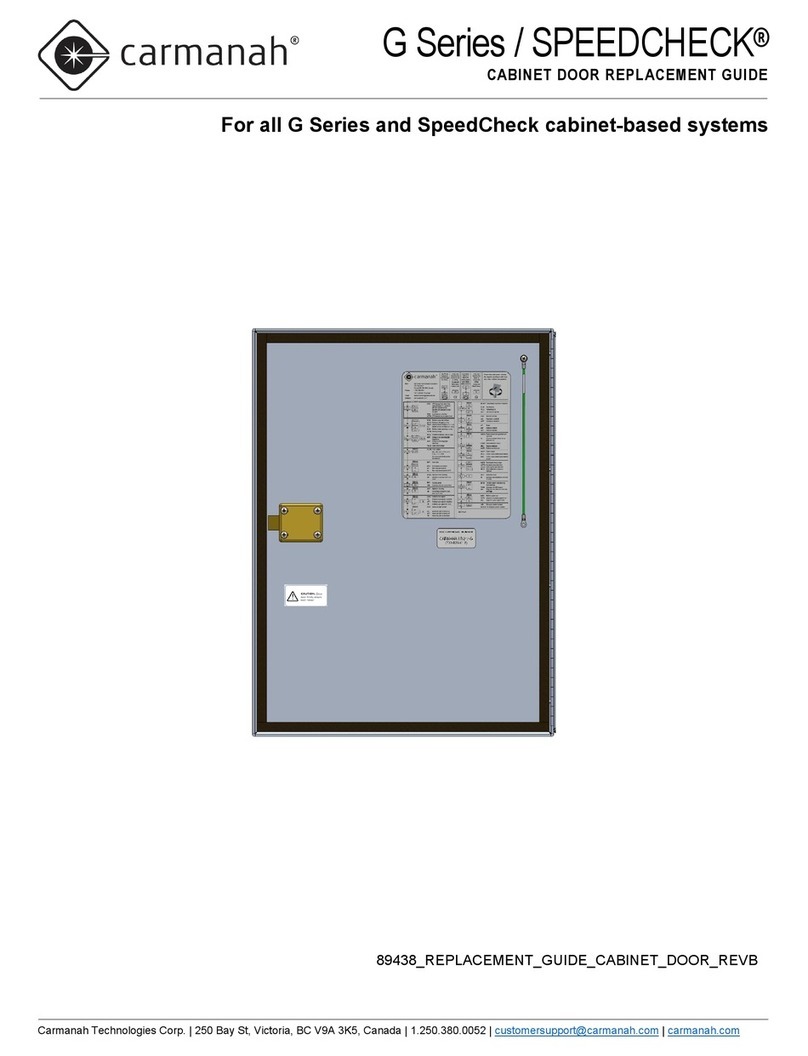
Carmanah
Carmanah G Series Cabinet Door Replacement Guide

Endress+Hauser
Endress+Hauser Micropilot S FMR530 Brief operating instructions
